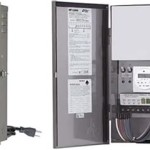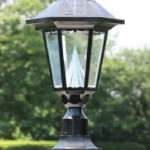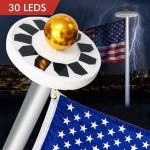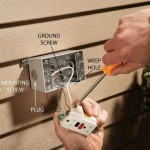Essential Aspects of Outdoor Lighting Photo Control
In outdoor lighting systems, photo controls play a crucial role in automating the operation of lighting fixtures. These devices detect changes in ambient light levels and respond accordingly by turning lights on or off. To optimize the performance and efficiency of outdoor lighting systems, understanding the essential aspects of photo controls is crucial.
This article delves into the fundamental components, operating principles, and key considerations associated with outdoor lighting photo controls, providing valuable insights for system designers, installers, and end-users.
Components of Outdoor Lighting Photo Control
Outdoor lighting photo controls typically comprise several key components:
- Photocell: The photocell is the heart of the photo control, responsible for detecting changes in light levels.
- Control Circuit: The control circuit analyzes the output from the photocell and determines when to turn lights on or off.
- Load Switching Device: This device controls the power supply to the lighting fixtures, turning them on or off based on the control circuit's signal.
Operating Principles of Outdoor Lighting Photo Control
Photo controls operate on the principle of detecting changes in ambient light levels. The photocell converts light energy into an electrical signal, which is then processed by the control circuit. When ambient light levels fall below a pre-determined threshold, the control circuit activates the load switching device, turning on the lights. Conversely, when ambient light levels rise above the threshold, the control circuit deactivates the load switching device, turning off the lights.
Key Considerations for Outdoor Lighting Photo Control
Several factors must be considered when selecting and installing outdoor lighting photo controls:
- Location: The location of the photocell is critical. It should be placed in an area that accurately reflects the ambient light conditions the lights are intended to illuminate.
- Sensitivity: The sensitivity of the photocell determines the light level at which the lights will turn on and off. It is important to choose a photocell with appropriate sensitivity for the desired lighting application.
- Time Delay: Time delays prevent lights from turning on or off too frequently during periods of fluctuating light levels. Time delays can be adjusted to optimize lighting performance.
- Environmental Factors: Outdoor photo controls should be rated for the environmental conditions in which they will be installed. Factors to consider include temperature, moisture, and UV radiation.
Conclusion
Outdoor lighting photo controls are essential components of any outdoor lighting system, enhancing safety, convenience, and energy efficiency. By carefully considering the components, operating principles, and key aspects discussed in this article, system designers, installers, and end-users can optimize the performance and effectiveness of their outdoor lighting systems.

Commercial Outdoor Lighting Control Systems Devtech M2m

Fp Outdoor Lighting Controls Led Dimming And Wireless

Simply Automated Pre Configured Simplysmart Landscape Outdoor Lighting Control Series

Outdoor Lighting Smart Home Brilliant

100w Cob Solar Street Outdoor Lights With Remote Control Pole Wireless Waterproof Perfect For Yard Parking Lot Garden And Garage Hyper Cart

Lighting Controls For Outdoor A Good Value The Lighthouse Group

Photocell Outdoor Lighting Control 866 637 1530

File Outdoor Lighting Control Panel Installation Jpg Wikimedia Commons

Ring Lighting Indoor Outdoor Home Switches And Bulbs

Tac City Goods Co Large Outdoor Lights Led Garden Ball Remote Control Lighting Decoration
Related Posts







